
Menu
While most trampolines are designed to stand up against outdoor weather, leaving a trampoline outside during severe weather events can be dangerous – more often for your tramp itself, but sometimes to you and your neighbors as well.
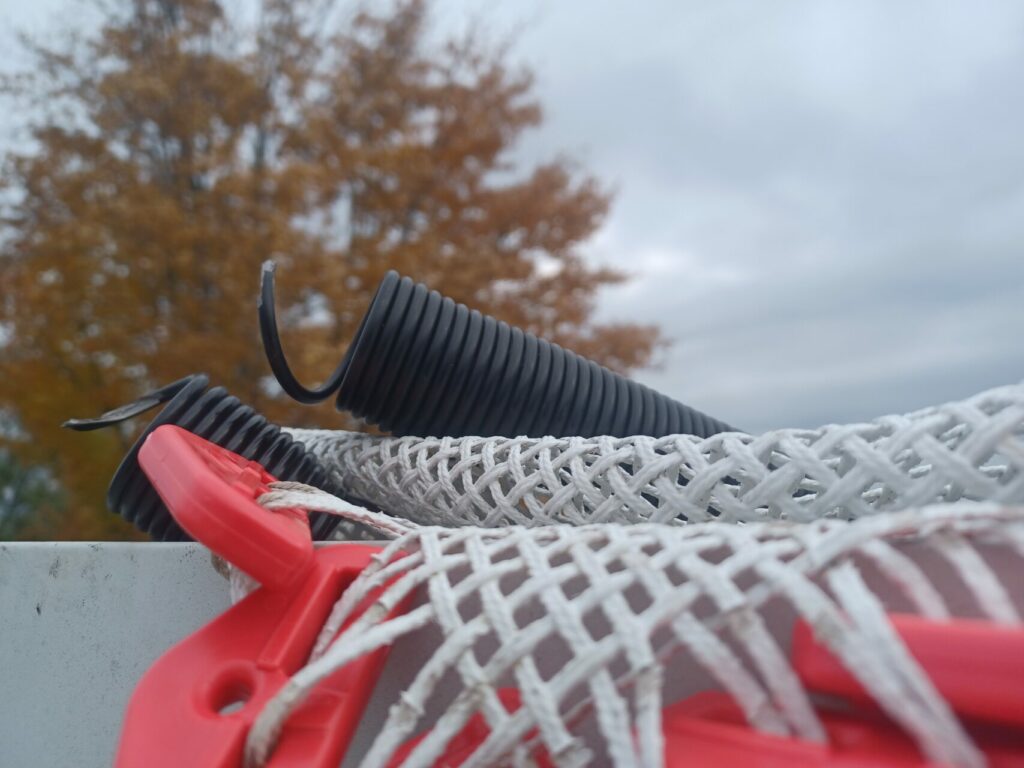
These weather events include:
In most climates, it’s a matter of “when” and not “if” these conditions will occur. Especially when you consider how severe weather events are trending upward in frequency. Fortunately, there’s a lot you can do to protect your trampoline in these conditions.
Most common backyard trampolines only weigh several hundred pounds, which means yours is probably one of the heaviest objects in your yard. It may seem like this is enough to anchor it during high winds and thunderstorms, but in fast enough winds (experts estimate 35-45 mph to be the tipping point), all that weight doesn’t matter. That’s because the air that rushes beneath a trampoline during a storm will catch the mat and often lift (or launch) the whole contraption into the air.
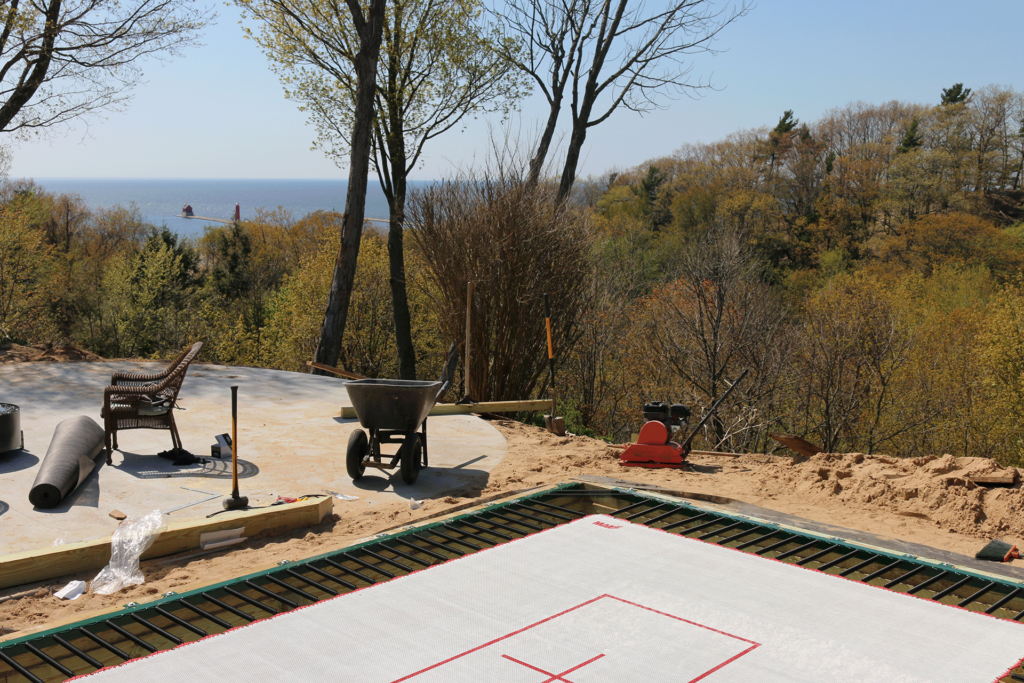
“From an aerodynamics point of view, (trampolines) are a wing and it will want to fly,” Mechanical engineering professor Dr Keith Alexander said in an interview with Wales Online. “You want to tie it up like a dog that’s likely to stray.”
This is especially true if your trampoline has a net around the exterior, which can collect debris and cause the trampoline to tilt, angling it just right for lift-off.
It probably doesn’t need to be said, but flying trampolines are dangerous – not just to the condition of the trampoline itself, but to nearby objects (houses, garages, and cars) as well as people. Plus, once your trampoline goes up, there’s no telling where it will come down. Maybe it’ll wind up in a neighbor’s yard, or maybe it will touch-down blocks away.
It’s important to consider the weather patterns where you live before purchasing your trampoline, so you can select the proper equipment. Remember, it doesn’t have to be a thunderstorm to endanger your trampoline – the winds can reach above 40 mph without lightning or even rain. If you live in an area with frequent high winds, an in-ground trampoline may be to your benefit.
But if you’re set on an above ground trampoline, take size and weight into consideration. Larger, heavier trampolines may seem like the safer option as greater size means more surface area – essentially a wider wingspan – unless you go with a commercial-grade trampoline. Additionally, if you have an open yard without many trees, bushes, or structures, — then air currents will move more freely. It may be prudent to plant a hedge or have a retaining wall constructed to block wind.
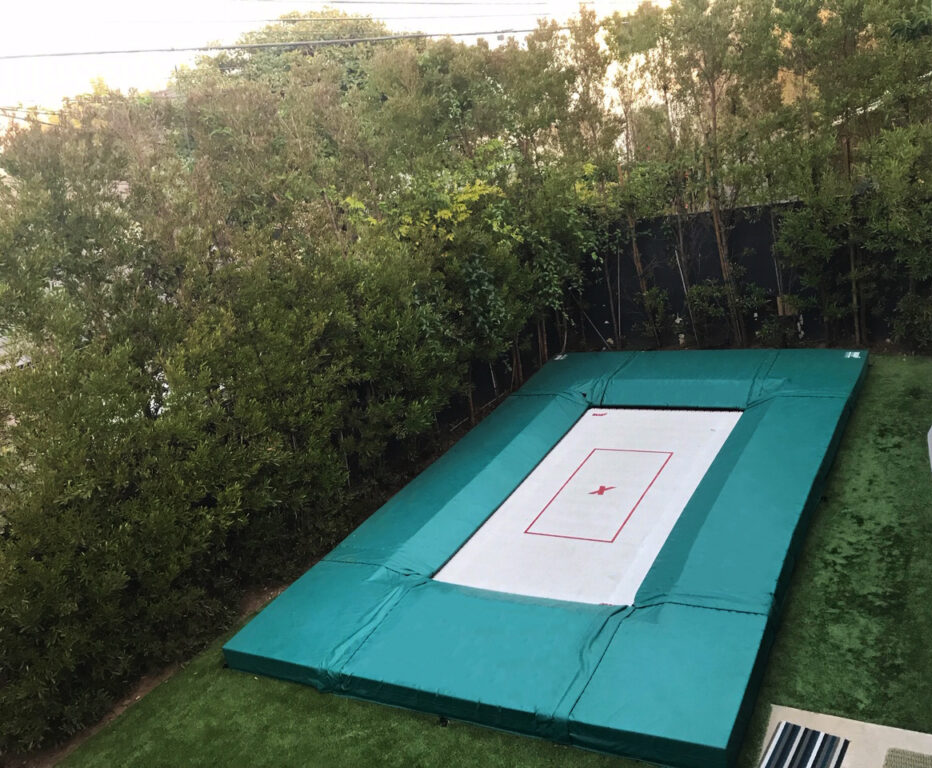
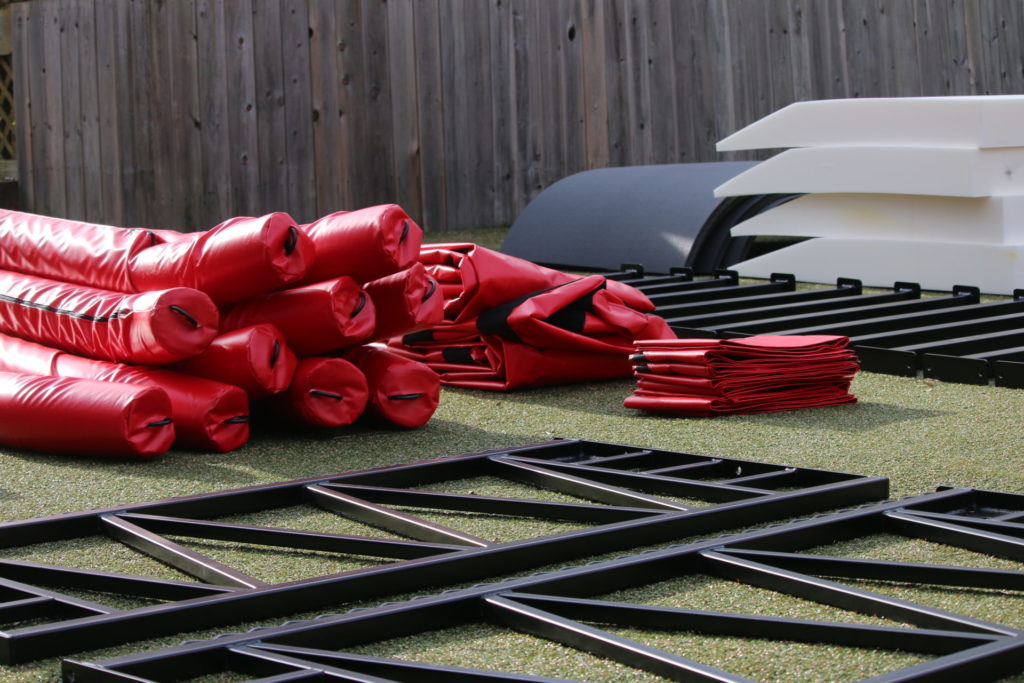
At the sight of a horrible, no-good, terribly awful and incredibly bad-weather forecast, it’s time to take measures to protect your trampoline. The safest and most effective way to protect your in-ground trampoline in high winds is simply to use a weather cover.
Our above ground is a commercial-grade trampoline, heavy enough to withstand the heaviest weather events. For a non-commercial traditional above ground found at big box stores, it is wise to take it apart and store it somewhere safe, inside.
Obviously this will require room and enough advance notice to take the trampoline down. However, if those options are unavailable, here are measures you can take:
Remove the Problem Pieces: Just removing the mat and exterior net can do a lot to prevent lift and debris from becoming a problem. This will also prevent the springs from enduring any excess abuse during the storm.
Move to a Safer Location: Moving your trampoline to a safe location will at least reduce the risk of damage. A garage or similar enclosure is the best choice, but in lieu of that consider using trees, hedges, and walls to act as windbreakers.
Anchors and Tethers: Most trampolines should include a set of anchors or tethers to tie your trampoline to the ground, a tree, or another stable object that wind is unlikely to shake. If you don’t have a tether or anchor kit, they can be purchased separately.
Last Minute Hacks: Of course, none of these tips will help if the storm is already on top of you and you’re scrambling for a solution. In these situations, you may have to create makeshift anchors using trash bags and sand, bricks, or anything else heavy you can find. One particularly Irish remedy even suggests buckets of water and rope.
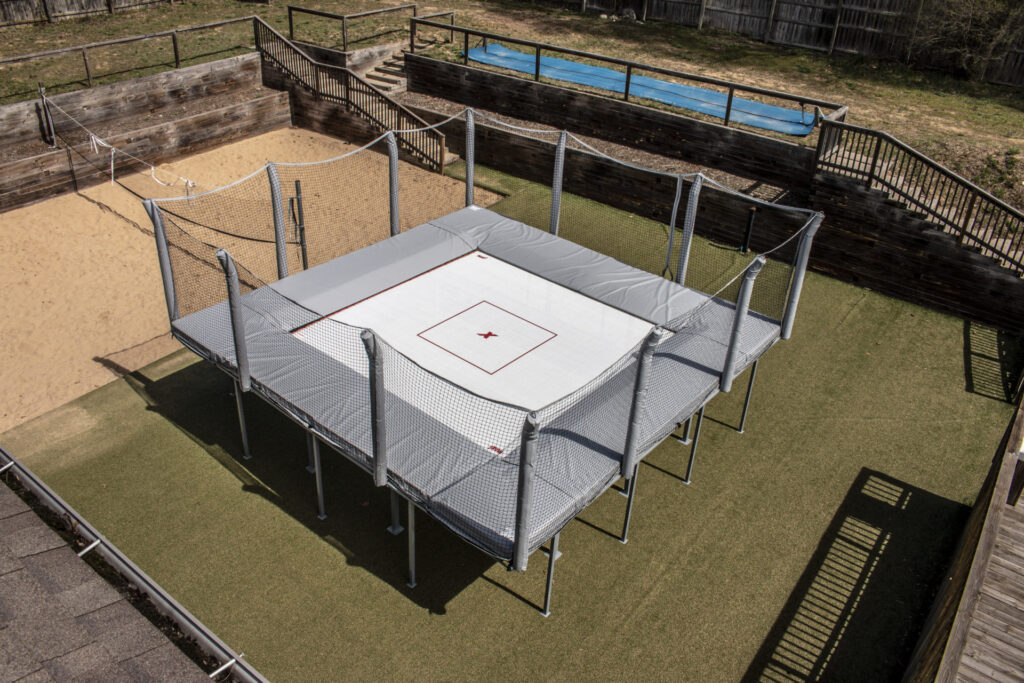
Don’t worry, a little rain won’t cause your trampoline to melt – they’re designed for outside use after all. But a heavy downpour is different. If excessive water collects in the mat, it can exceed the weight capacity and thus stretch the strings beyond what they can handle. This will take the bounce out of the springs and hurt performance.
Plus, if your trampoline consistently endures water exposure, it can hasten wear and tear on the mat and lead to corrosion or rust on the springs. This is especially true in colder climates, where it takes longer for water to dry and there is risk of freezing.
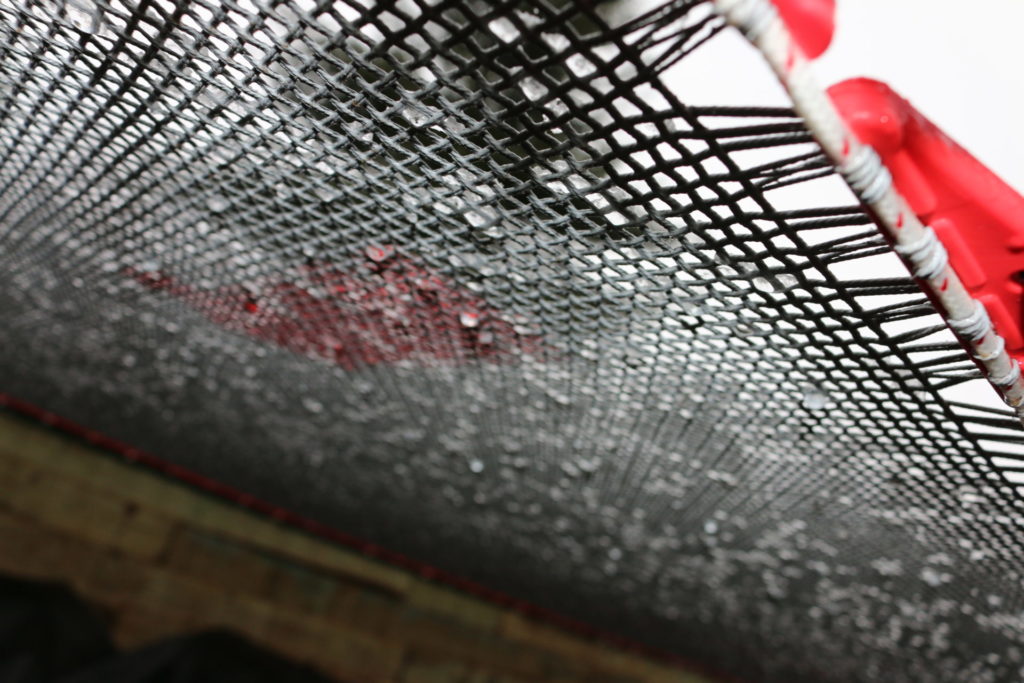
“So…?” you ask: “What can I do to protect my trampoline from water damage?”
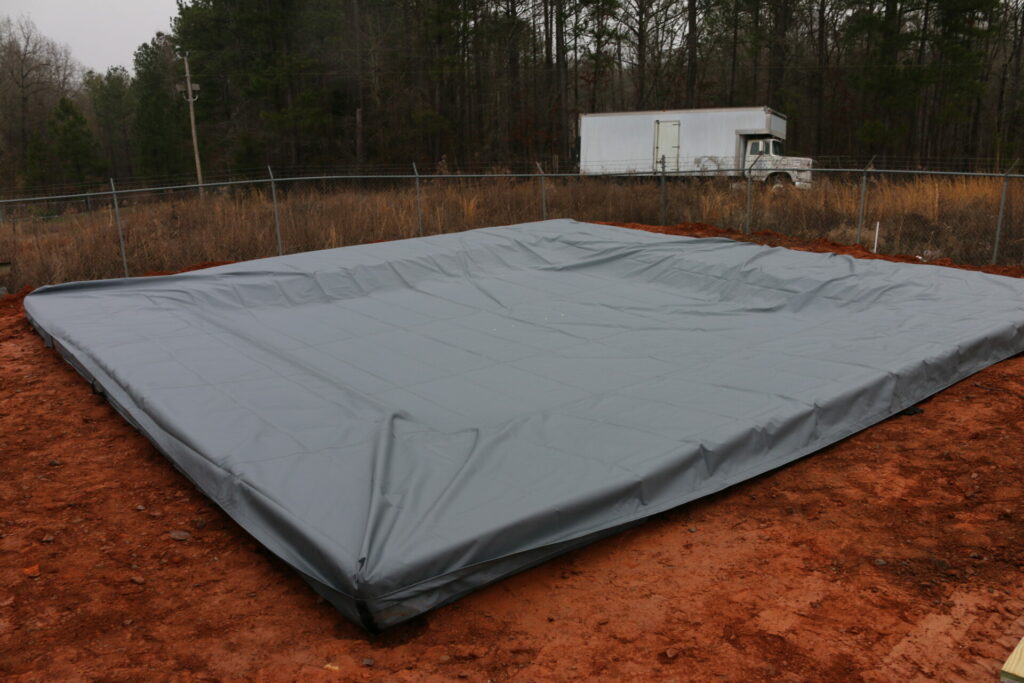
As you purchase and assemble your trampoline, there are a few things you can consider concerning heavy rains and water damage. These include:
Rust Resistant Frames: The material of your trampoline’s frame will determine its vulnerability to rust and corrosion. Powder-coated steel is by far the best and most durable choice, followed by galvanized steel.
Frame Covers and Spring Padding: If your trampoline isn’t made of powder-coated or galvanized steel, the alternative is a plastic cover for the frame to keep water out and weatherproof PVC padding to protect the springs (as a bonus, these also protect against burns in the summer unless you chose black pads). Both of these may be included with your trampoline, but are also available for purchase separately.
Weather Covers: Weather covers are key to protecting your trampoline from the elements. They cover the entire trampoline any time it’s not in use. Plus, they add extra protection from UV rays. When purchasing, make sure to get the correct size. Too small and it won’t fit, but too large and the loose fit will bunch up and fail to keep water out.
Even if your trampoline is covered in protective equipment, there are still some steps to care for it after heavy rain comes through your area. These include:
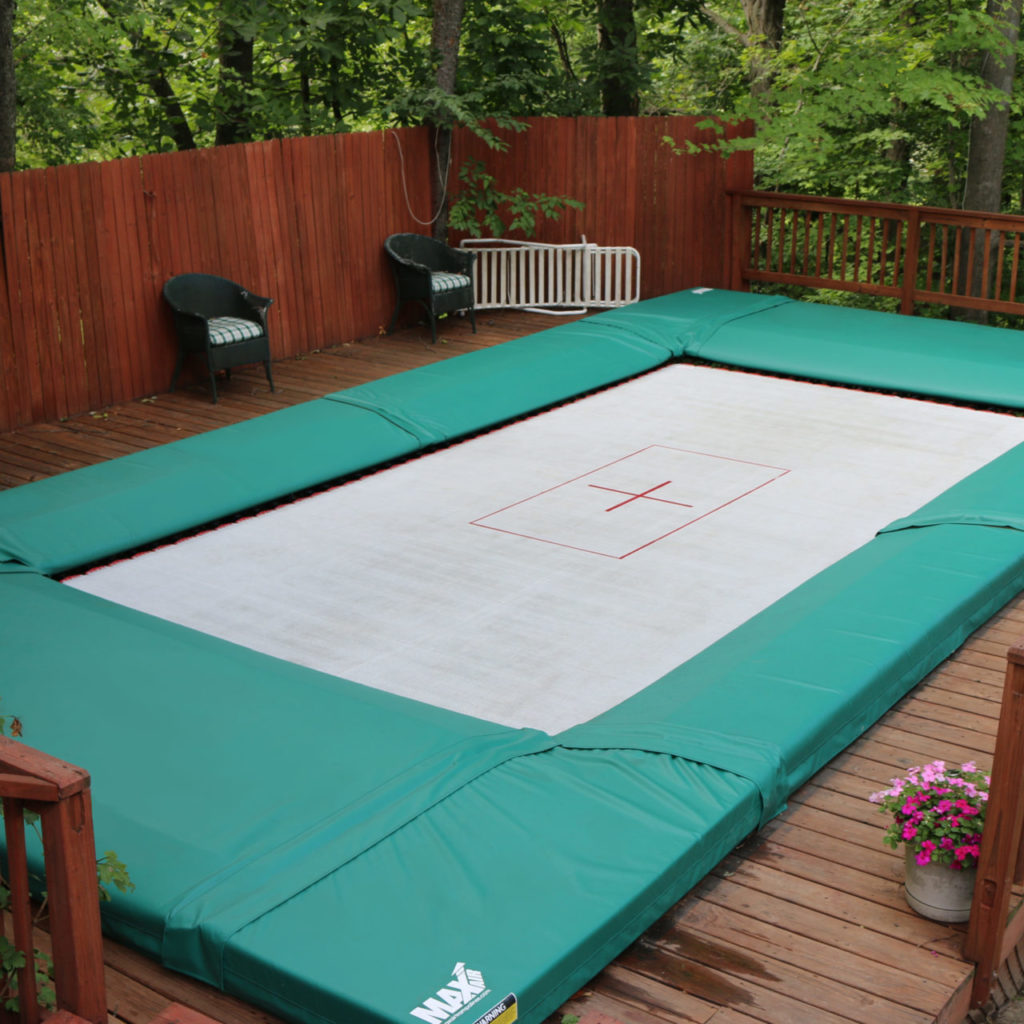
Empty the Cover: Whether the mat is bare or under a protected cover, rainwater can still collect and pool in the center. After a rainstorm, make sure to drain the center by removing the weather cover (or, in the case of a bare polypropylene mat, pushing upward on the center from underneath so the water flows off the edges). Fly and web beds benefit from their open weave design in these instances.
Clear Debris from the Mat and Springs: Debris such as twigs, sticks, and leaves can collect on the mat and between springs – preventing water from draining through the mat and causing damage to the springs the next time someone bounces. Always clear the mat after a rainstorm if you do not use a weather cover.
Don’t Jump Until Dry: Jumping on a wet poly bed trampoline can cause easy slips and falls, but it can also cause permanent damage to your trampoline. Not only do you have the weight of the jumper, but the added weight of the jump force and the weight of the water collected on the bounce mat. This can quickly cause you to exceed your trampoline’s weight capacity. Never jump on a wet trampoline.
A properly installed trampoline can withstand most weather, but protecting it from the elements also means protecting your family and your house. We take great pride in the care and attention we put into our products, and with the proper maintenance and protection, you can experience the best performance and safety. Our mission is to empower those who are dedicated to training to learn and achieve their maximum performance.
If you want more info on how to protect your tramp from severe weather, request a Follow Up, email, or call us today! Our team is happy to answer any of your questions to help you create the trampoline of your dreams
© 2024 MaxAir Trampolines, All Rights Reserved
Web design and digital marketing by Valorous Circle LLC
MaxAir Trampolines is a proud member of IATP and ASTM International.
Protected by reCAPTCHA. The Google Privacy Policy and Terms of Service apply.

By subscribing to our newsletter, you'll discover the Top 4 Reasons You Don't Buy Cheap Trampolines.